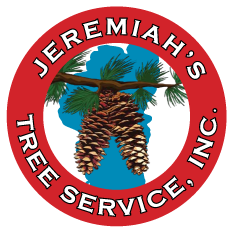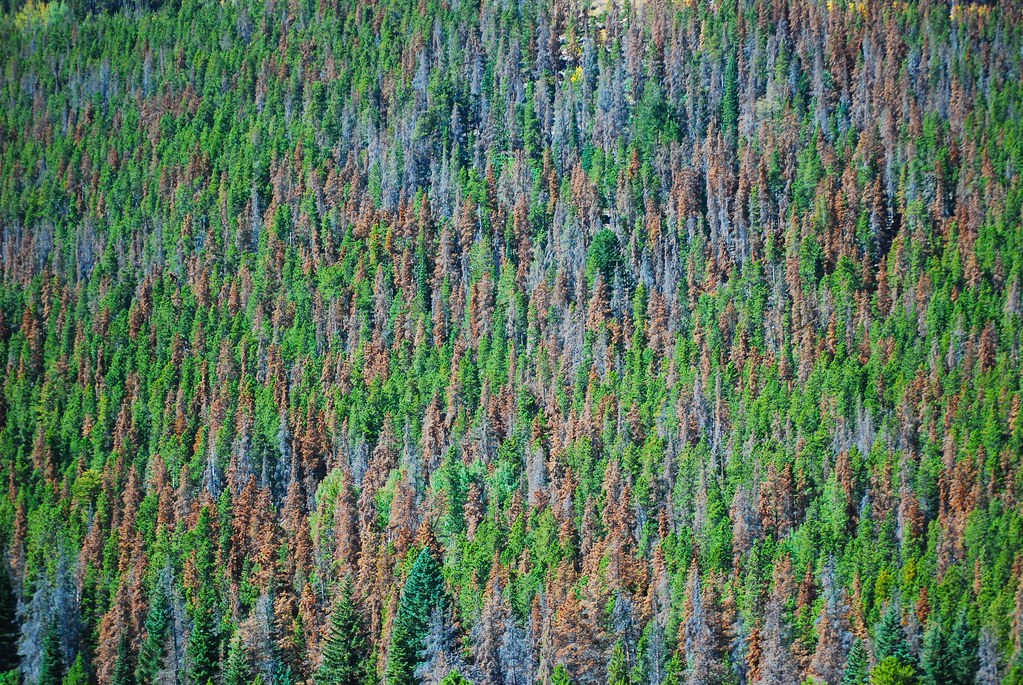Lake Tahoe’s forests are a natural treasure—but they’re under attack. Each summer, bark beetles, borers, and other pests take advantage of drought-stressed trees and rising temperatures to spread quickly and cause irreversible damage.
If you’re a local or seasonal homeowner in the Lake Tahoe Basin, now is the time to act. At Jeremiah’s Tree Service, we’ve been monitoring pest activity throughout the region—and we’re seeing signs of increased pressure already.
Here’s what every Tahoe-area homeowner needs to know this summer.
Bark Beetles, Borers & ISHB: Who’s Causing the Damage?
- Bark Beetles (e.g., Western Pine Beetle, Fir Engraver Beetle):
These tiny but deadly insects tunnel into the bark of pine and fir trees, cutting off the tree’s ability to move water and nutrients. Infestations can go unnoticed until trees begin to brown or die. - Invasive Shot Hole Borers (ISHB):
While less widespread in Tahoe than in coastal areas, ISHBs are moving into new territories. They attack hardwoods like alders and willows and bring disease-causing fungi with them. - Flatheaded Borers & Round headed Borers:
These wood-boring beetles target weakened trees, especially those stressed by drought, fire, or root damage. Oaks, aspens, and ornamental trees are especially at risk.
Why Summer is Prime Time for Infestation
🌡️ Heat accelerates insect reproduction.
Many pest species can complete multiple generations in one hot season, meaning a small problem can explode quickly.
💧 Drought stress weakens tree defenses.
Healthy trees can often “pitch out” boring insects with sap. But in dry conditions, even mature trees lose this natural defense.
🏡 Vacation properties may go unchecked.
Summer is when many second homes sit empty or receive only occasional care—giving tree pests the upper hand.
What You Can Do: Inspection, Prevention & Protection
✅ Schedule a professional inspection.
Many pest signs—like tiny boreholes or sawdust-like frass—can be hard to spot without trained eyes. Jeremiah’s Tree Service offers expert assessments to catch problems early.
✅ Look for warning signs:
- Needles turning red or brown at the top of the tree
- Bark peeling off or woodpecker activity
- Clusters of small holes in the bark
- Unusual dieback or thinning crowns
✅ Water wisely.
Deep, infrequent watering can improve a tree’s ability to resist pests—especially important for younger or newly planted trees.
✅ Remove and dispose of infested wood.
Dead or infested trees should be removed and properly disposed of to prevent further spread.
Frequently Asked Questions About Summer Tree Pests in Lake Tahoe
How do I know if my tree has bark beetles?
Early signs include reddish dust at the base, small pitch tubes (sap blobs), or boring holes in the bark. If you notice browning at the crown or excessive woodpecker activity, it’s time to call an arborist.
Are pest infestations covered by homeowners’ insurance?
Most insurance policies don’t cover damage caused by insects or tree death due to neglect. Preventive care is key—and far more cost-effective than emergency removals.
Can I treat an infested tree myself?
Some pests may be managed early on with targeted treatments, but DIY efforts often miss hidden infestations. Professional inspections ensure the right diagnosis and safe, effective treatment.
Is pest damage always visible?
Not always. Insects often attack from within or under the bark, making damage hard to spot until the tree is already compromised. That’s why annual inspections are so important.
What types of trees are most at risk?
In the Tahoe Basin, lodgepole and ponderosa pines, white fir, aspens, and ornamental hardwoods like birch and willow are commonly targeted, especially when stressed by drought or root damage.
Don’t Wait Until It’s Too Late
Summer pest infestations can escalate quickly—especially in hot, dry years like this one. Early detection and intervention are your best tools for protecting your landscape and avoiding costly tree removals.
📞 Contact us today at (530) 581-1945 to schedule a free consultation or inspection.
Pro Tip:
If you’re unsure when your trees were last inspected, now is a great time to get on a seasonal care schedule. We can help you track health, catch issues early, and keep your trees thriving year-round.

